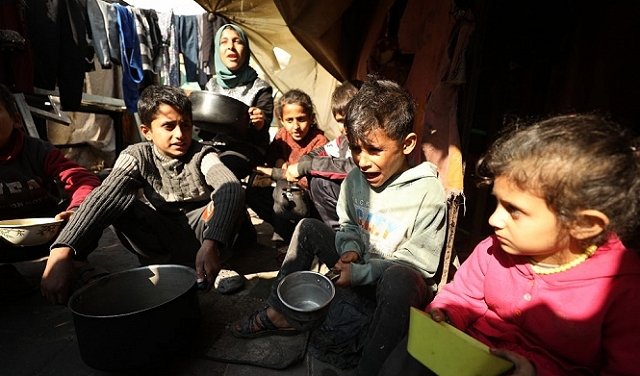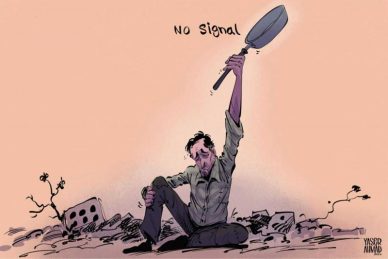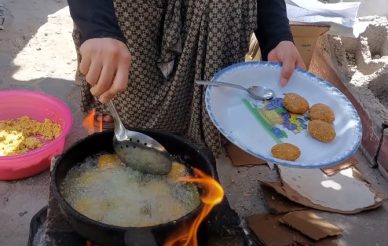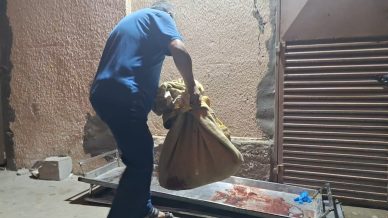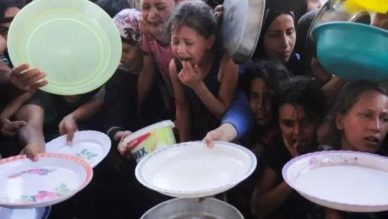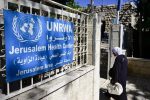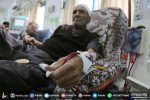GAZA, (PIC)
While Zionist propaganda works overtime to promote the supposed opening of new crossings in Gaza and the expansion of so-called “humanitarian zones” with aid deliveries, the reality on the ground tells a different story.
Anyone who follows the situation in Gaza can clearly see that while the Israeli occupation army claims to open new crossings, it simultaneously closes previously functioning ones that are well-equipped to allow the flow of goods and aid.
And when some trucks are allowed to enter, they are often looted by groups of thieves—mainly collaborators with the occupation—who steal the aid and then sell it in the markets at exorbitant prices.
Furthermore, what the occupation calls “humanitarian zones” are nothing more than death traps, where Israeli aircraft bomb displaced people’s tents, turning them into hellish scenes. Women, children, and the elderly are killed without mercy after enduring long periods of displacement, thirst, and starvation.
This is not an exaggeration of the grim reality in Gaza, which is being annihilated in the flames of an ongoing criminal war for over a year. This truth is documented even by global humanitarian organizations, the United Nations, and international media outlets. Despite their bias towards the occupation’s narrative, they can no longer cover up the continuous crimes of the Zionist regime.
Empty markets and soaring prices
A simple visit by a Palestinian Information Center (PIC) reporter to the market in Deir al-Balah, where tens of thousands of displaced people have sought refuge, reveals the frustration and helplessness etched on shoppers’ faces. They are trapped between the lack of essential goods and the sky-high prices of whatever little remains.
“Abu Hadi,” a father of six, was forcibly displaced by the occupation from the Al-Shati refugee camp at the beginning of the war to Deir al-Balah. He wandered around the market for a long time, but couldn’t find anything to bring back to the tent where his family awaits him, hoping for a meal to stave off hunger.
With frustration in his voice, he said, “This isn’t a market—it’s a disaster. We can’t survive like this. The prices are insane, and many vegetables are missing. Meat has completely disappeared from the market for a long time, and even canned goods are now too expensive.”
Abu Hadi believes that all of Gaza, from north to south, is now experiencing a true famine. The basic ingredients for preparing even the simplest meal are no longer within reach, and obtaining them is difficult and requires money that people don’t have.
Seventy-year-old Umm Salah, a resident of Deir al-Balah, says, “In my long life, I have never seen days worse than these. When have we ever been unable to make a simple salad? For months now, we haven’t been able to. We are living through a war unlike anything we’ve seen before.”
With sadness in her voice, she added, “They haven’t been satisfied with killing us with bombs and bullets, and now they want to kill us with hunger.” She called on the Arab and Muslim world to wake up and look at the oppressed people of Gaza. “May God curse anyone who sleeps full while their neighbor is hungry.”
Government employee Alaa noted that any meal for a typical family in Gaza costs at least 100 shekels ($30), while the average salary for an employee is no more than 800 shekels ($240). “That’s just for one meal a day, without accounting for other expenses,” he explained.
He emphasized, “We are living through a real famine, both in northern and southern Gaza. There is no difference. The occupation is trying to create the illusion that the north is worse off than the south, but the truth is that all of Gaza is being starved. The north is worse, yes, but the south is suffering greatly too.”
Dire situation and imminent famine
The World Food Program stated that Gaza’s markets are in a dire condition, with prices soaring due to the complete siege and the ongoing Zionist aggression since October 7, 2023.
In a post on “X” (formerly Twitter) on Thursday, the UN program said, “Fresh food, eggs, and meat are unavailable, and prices have reached unprecedented levels.”
The program called for its team to be allowed to reach the neediest residents in Gaza, noting that the lack of aid has made life even harder for families.
The Famine Review Committee of the Integrated Food Security Phase Classification issued a rare warning this week, expressing concern over the “imminent and severe risk of famine” due to the rapidly deteriorating situation in Gaza.
Earlier, the Euro-Mediterranean Human Rights Monitor stated that tens of thousands of Palestinians, including patients in three hospitals in northern Gaza, are at immediate risk of death from hunger or permanent health damage due to the illegal Israeli blockade.
The monitor stressed, “It’s time to officially declare a famine throughout Gaza, particularly in the north, with all the legal and moral obligations that come with such a declaration.”
It urged relevant authorities and international organizations to officially declare a famine in northern Gaza, where for more than 50 days, the occupation has blocked the entry of aid or goods to hundreds of thousands of besieged residents facing a genocidal campaign of killing and forced displacement.
American aid organizations said last Tuesday that the occupation has created famine-like conditions for 800,000 civilians across Gaza, failing in its legal obligations to facilitate adequate humanitarian relief for civilians.
The aid organizations explained that the obstacles imposed by the occupation on aid deliveries have increased civilian deaths and suffering.
The UNRWA Commissioner-General Philippe Lazzarini said a famine is likely in northern Gaza, where an Israeli ethnic cleansing campaign has been ongoing for over a month.
He explained that the occupation is using hunger as a weapon, depriving people in Gaza of essentials, including food for survival.
Lazzarini noted that the aid entering Gaza is insufficient, with an average of just over 30 trucks daily, meeting only 6% of the daily needs of Palestinians.
More than just a siege
What’s happening on the ground isn’t just about blocking aid and goods from entering Gaza. There’s something that Gaza’s residents know, which has also been confirmed by an investigative report from the Israeli newspaper Haaretz. The report, published last Sunday, revealed that the Israeli army allows armed groups in Gaza to loot aid trucks and extort payments.
According to Haaretz, armed groups linked to two well-known families in the Rafah area systematically prevent a significant portion of the trucks entering Gaza through the Kerem Shalom crossing from reaching their destinations. The Israeli army deliberately turns a blind eye to these actions.
Sources in international aid organizations reported that armed men stop trucks using makeshift checkpoints or shoot at their tires, then demand “passage fees” of 15,000 shekels. If the driver refuses, the truck is hijacked, and its contents are stolen.
These attacks are carried out under the watchful eye of the Israeli army, just a few hundred meters away from its forces. Some aid organizations have approached the Israeli army about these incidents, but they refused to intervene.
The aid organizations noted that the Israeli army also prevents them from using safer routes.
A senior official from an international organization working in Gaza said, “I saw an Israeli tank just 100 meters away from where an armed Palestinian with a Kalashnikov was standing. The armed men beat the drivers and took all the food.”
To avoid such incidents, some aid organizations agreed to pay the extortion fees through a Palestinian company acting as an intermediary.
The area where the aid is being looted is under Israeli air surveillance, monitored by drones.
According to international aid organizations, the looting of aid trucks reflects the complete chaos in Gaza due to the absence of effective civil governance. The remnants of the local police tried to act against the thieves, but the Israeli army attacked them, claiming they were part of Hamas.
The investigation concluded that international organizations believe solving the problem and enabling aid to reach Palestinians in Gaza requires a police force—whether Palestinian or international—a step the Israeli military and political leadership oppose.

